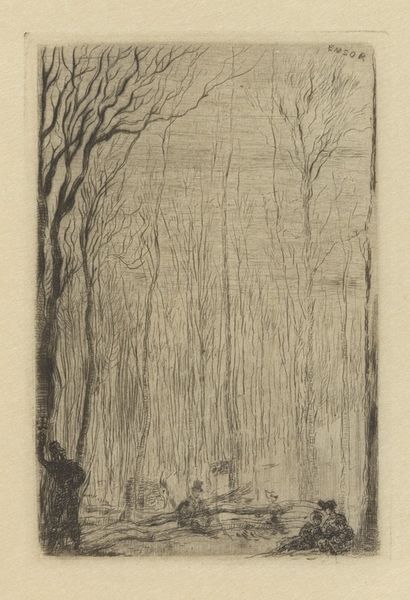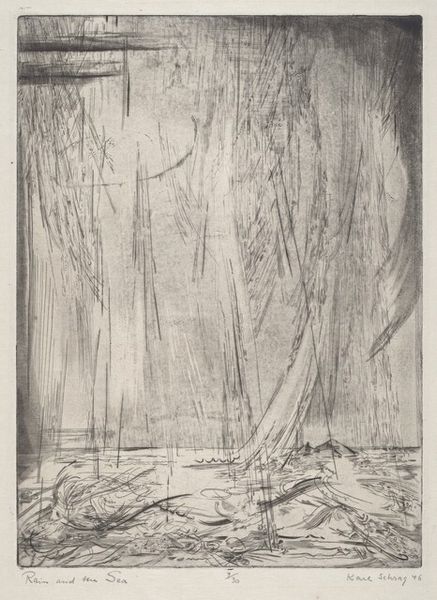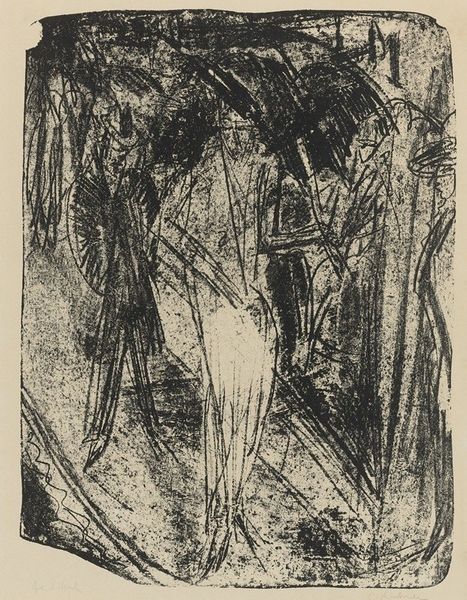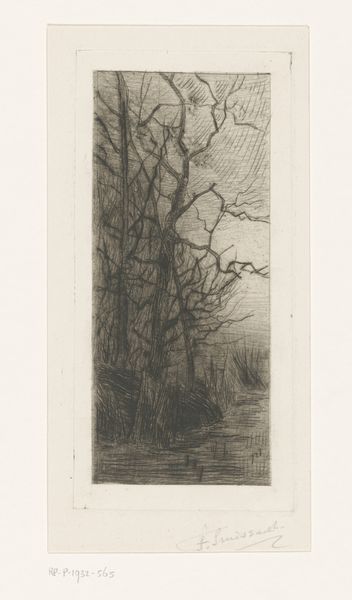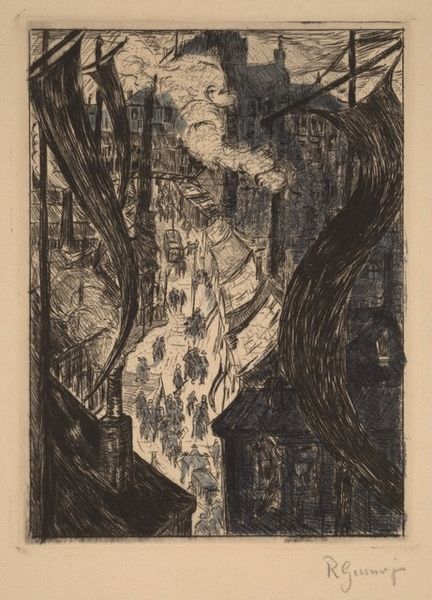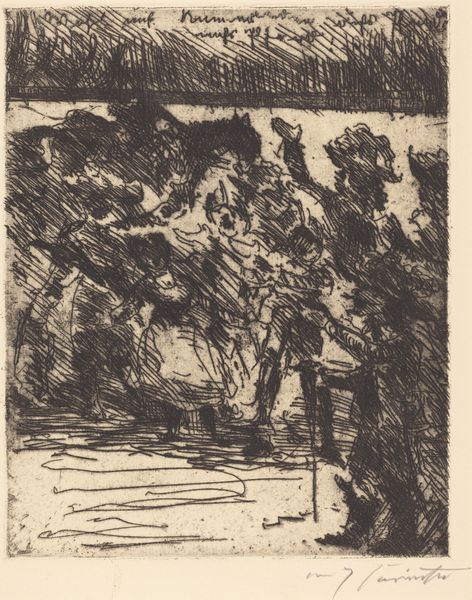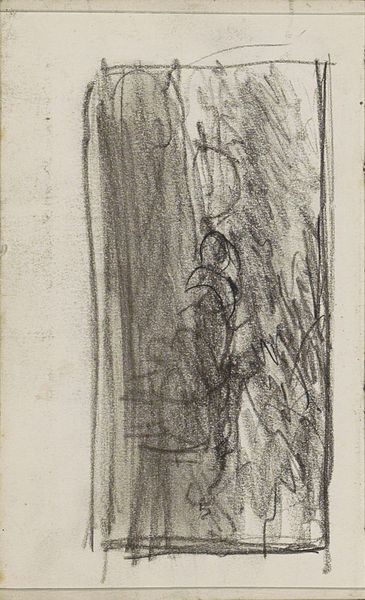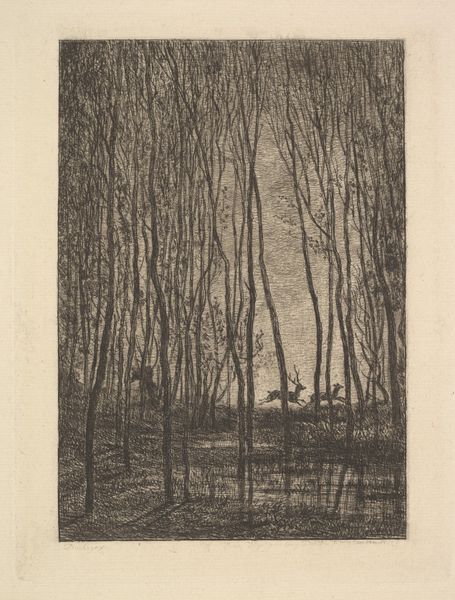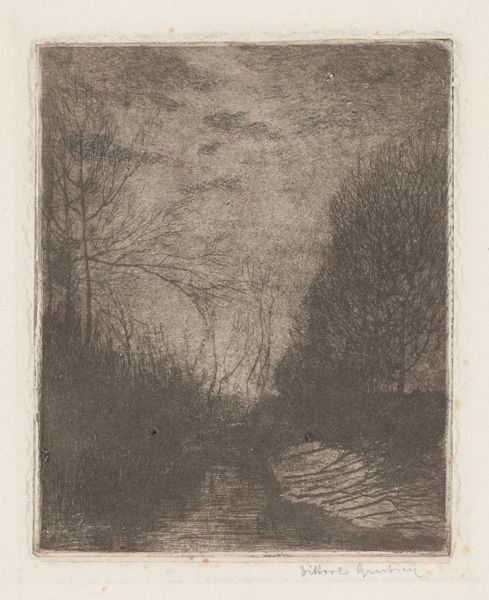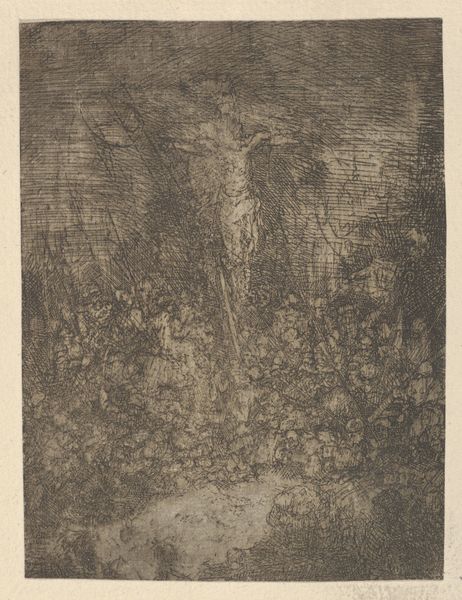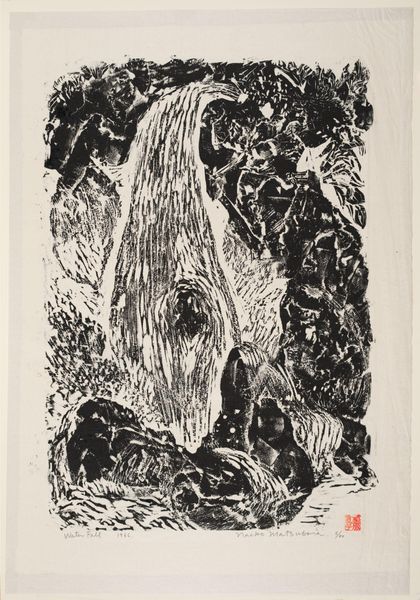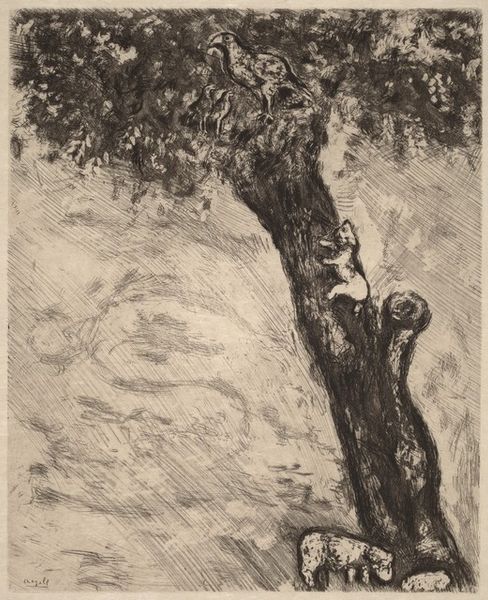
drawing, print, etching
#
pencil drawn
#
drawing
# print
#
etching
#
pencil sketch
#
landscape
#
charcoal drawing
#
pencil drawing
#
symbolism
#
post-impressionism
#
realism
Copyright: Public Domain: Artvee
Editor: So this is James Ensor's "Forest at Groenendael" from 1888, done as an etching. I'm immediately struck by the contrast between the almost chaotic energy of the trees and the still, quiet figures at the bottom. What jumps out at you when you look at this? Curator: You know, it feels like a memory, doesn't it? All those densely packed vertical lines—a veritable thicket!—they're not just trees, they're a screen. The figures become these blurry echoes in the foreground, maybe enjoying a picnic or simply seeking shelter within the woods. Editor: A screen, that’s an interesting way to put it. Curator: Absolutely. The man was all about challenging conventions, and it’s hard not to feel this underlying tension between the realistic depiction of the forest, the post-impressionistic technique and his movement towards symbolism. What is being hidden, and what is revealed? Are the figures separate from or integral to this wall of nature? He gives you these people in the foreground, small, huddled, seeking…something. Editor: That makes me think about the different scales. The immensity of the forest compared to these tiny people. It's like we're seeing both the beauty and the indifference of nature all at once. Curator: Exactly. Ensor had a real knack for capturing that push and pull, that human relationship with something greater, wilder, unknowable. You get the sense, maybe, of something melancholic lurking beneath the trees. Editor: This piece is making me see Ensor's other work in a completely new way, too! Curator: Good art does that, right? Changes your lenses. And you start seeing the world around you, as a series of dense impressions.
Comments
No comments
Be the first to comment and join the conversation on the ultimate creative platform.
